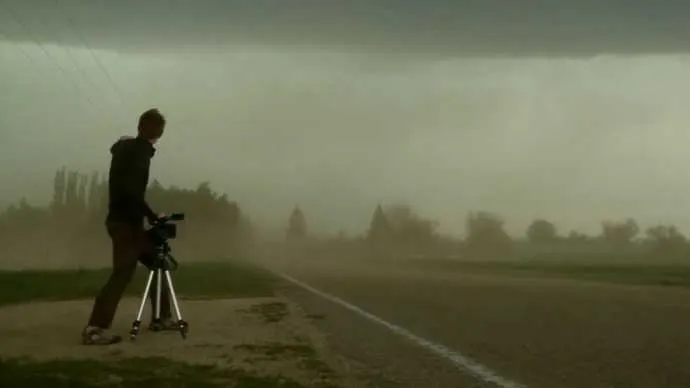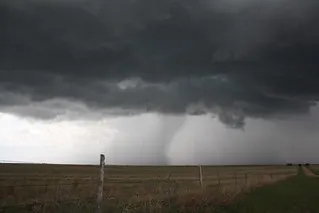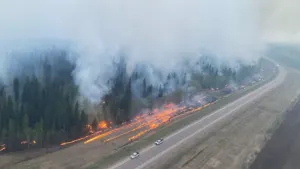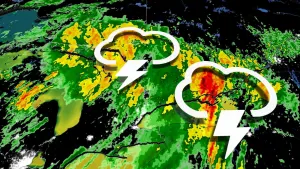
A surprising amount of effort goes into chasing storms
Storm chasing comes down to weather, time and money.
Storm chasing is made up of a series of “Now what?” moments that often need to be made while metaphorically screaming and trying not to drive into a tornado. Others have to be worked over debated and criticized, sometimes for weeks.
Decisions, decisions.
Figuring out when to head down to the U.S. Plains is one of those long fought over decisions that can make or break a chase season. It comes down to limited resources and a murky forecast.
If I had unlimited resources, we’d just head out to Oklahoma in mid-April and hang out in Norman until something happened. In fact, I’d be eating steak dinners and having my personal helicopter pilot pick me up whenever I felt like the hot tub and Maine lobsters were boring.
The real world has all kinds of restraints, not the least of it is money. I am held to a certain budget and that holds me to a specific time period; a standard two weeks. The trick is to hit the most active storm time in the Alley that’s covered by those 14 days.

To get really active storms in Tornado Alley (Texas to South Dakota) we need a few things to come together: moisture, winds, and boundaries.
The amount of moisture available for storm development (more moisture = bigger storms) is dependent on the Gulf of Mexico and how air moves across it. In order to get moisture up into the Alley, the winds must move north to south over as much of the Gulf as possible. This flow changes as the cold air masses push down from the north or as the jet stream slides around high pressure systems in the atmosphere. This phenomenon I’m describing is known to storm chasers as “moisture return”. As cold air masses flood down from Canada, they can shift the winds at the surface and if they’re strong enough, force a total shutdown of the moisture flow off the Gulf into Tornado Alley.
Winds are critical in creating an active storm period. You can have all the moisture in the world, but without the wind doing the right thing, all you’ll get is a popup shower. In order to get rotating storms (known as supercells) we have to have winds that change direction and speed. To get that, you need the jet stream roaring over the areas that you want to chase in. Specifically, we want a trough in the jet stream in place justified left over Tornado Alley. If you look directly down at a map of the jet stream, troughs show up as dips from north to south across North America that favour strong storm development.

Finally, we need something to trigger the storms. Having moisture and a good jet doesn’t always mean you’re in for a big storm. If there isn’t a good boundary moving through the chase area, all the wind and moisture isn’t going to get used at all. What do I mean by boundary? It’s actually the interface point between two air masses; cold or dry vs. warm and moist. It’s right on those boundaries that storms will develop. The differing densities of the two air masses will force the less dense air mass up and over the denser air mass. Think of it like a titanic bulldozer of cold, dense air slamming into the sandpile of warm, less dense air. There’s only one way that “sandpile” can go, up, and once it’s forced into the colder air above, a lot of things happen really fast and it quite often leads to storms.
All of these factors are dependent on each other. For example: a jet trough tends to draw cold air southwards and thus, a trough is tightly associated with an air mass boundary. The movement of a trough also influences the movement of air across the Gulf. So, it’s often hard to tease out one variable and concentrate on that.

The big problem? Knowing exactly when these variables all come together perfectly, especially when all you have is notoriously unreliable long range forecast models.Thus, chasers tend to rely on the jet stream trough and ridge pattern to determine when an active period is shaping up. It’s not the only thing, but it’s a good first step. For instance, you can have a beautiful trough moving in, but for some reason, the moisture return into the Plains might be limited. That means the winds are there but the fuel isn’t. Or you might have a lot of moisture, but the jet stream just isn’t strong enough to fire good storms.
So, the question for chasers is always, “Do we go now, or do we wait and see if the next trough is more to our liking?”
And that’s always the trick; predicting the future is never easy. I’ll be talking more specifically about 2016 in my next post.










